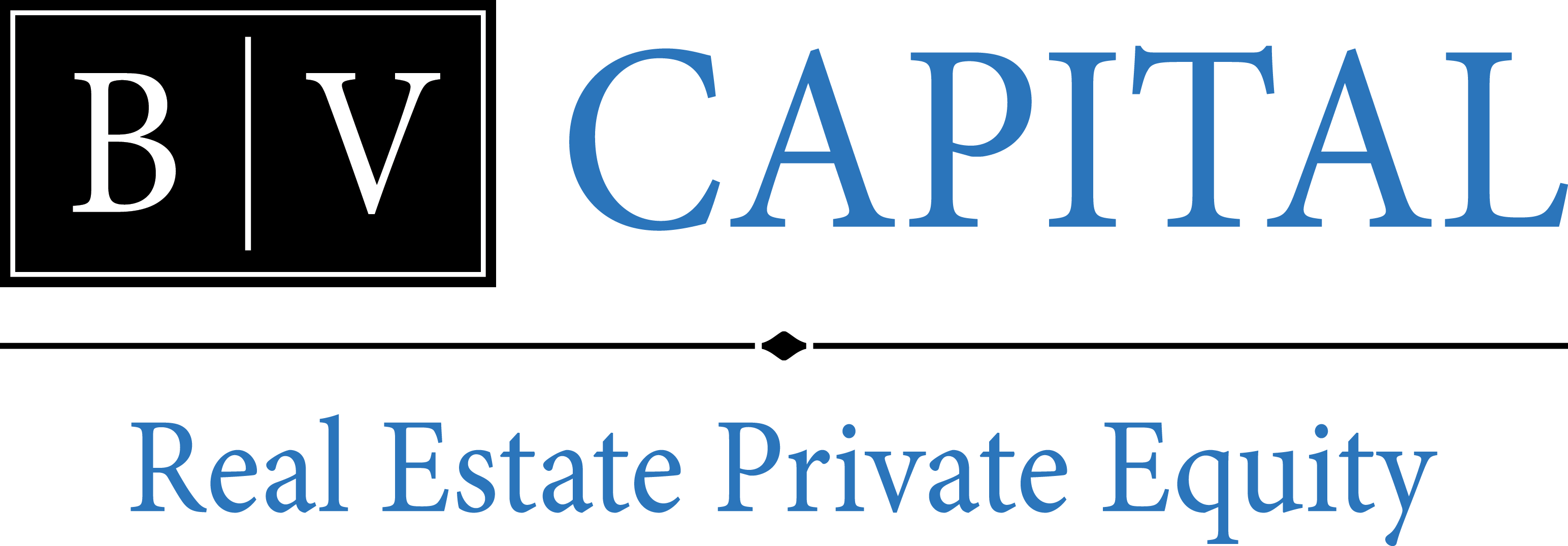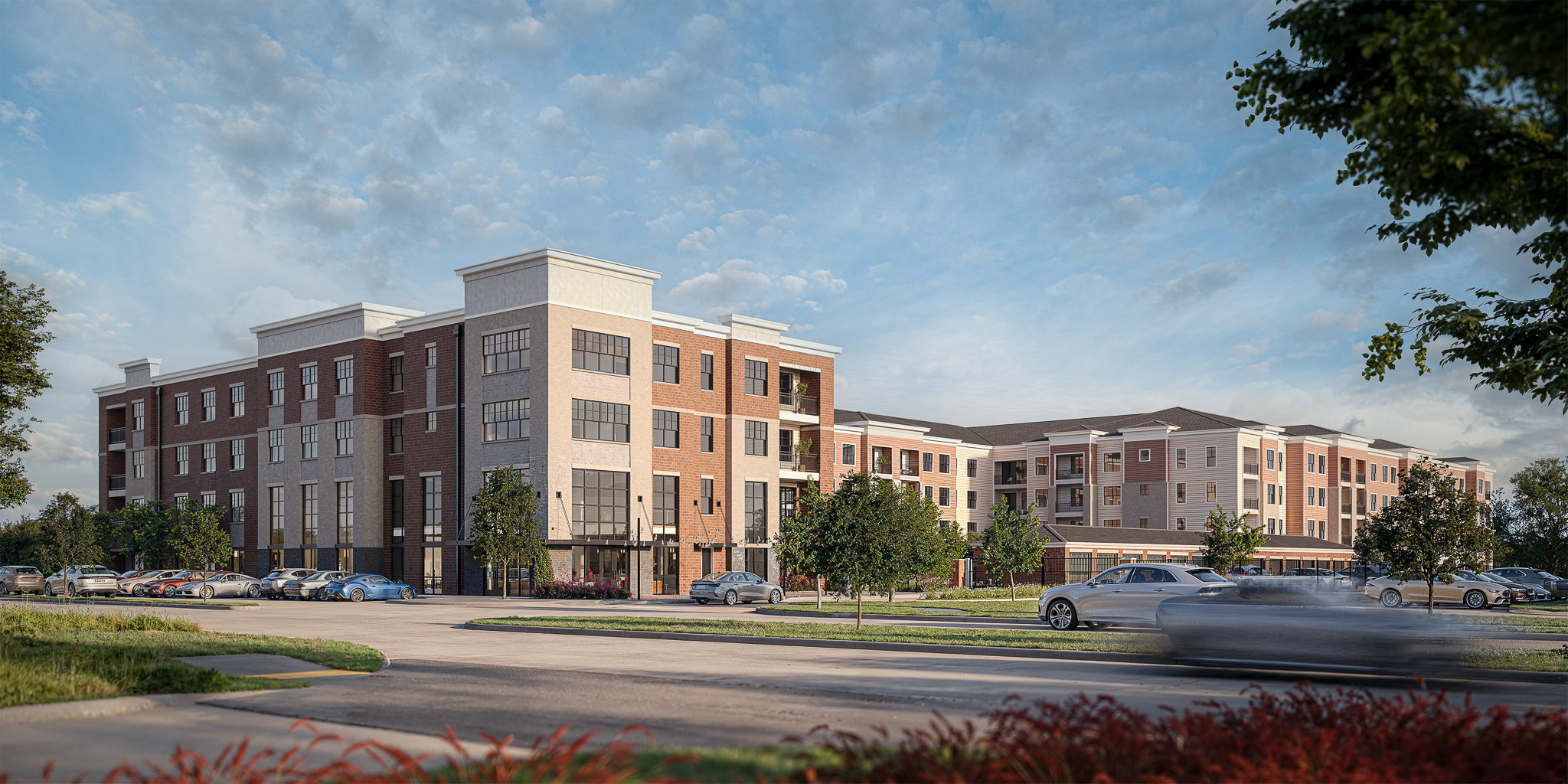Article Overview: This article examines BV Capital's approach to ground-up multifamily development, exploring how this strategy differs from traditional value-add investing. We cover the unique economic advantages, our two-phase investment structure, risk management framework, and institutional exit strategy, with particular focus on our Texas markets.
Key Topics:
The traditional value-add model in multifamily investing - buying existing properties, improving operations, and selling at a compressed cap rate - faces mounting challenges. Asset appreciation and rising debt costs have fundamentally altered risk-return dynamics, creating an environment where ground-up construction offers compelling advantages for sophisticated investors.
As an institutional developer and real estate fund manager with extensive experience across Texas markets, we have observed a clear evolution in the risk-return profile of different investment strategies. In the current market environment, value-add opportunities have become increasingly constrained by asset appreciation and rising debt costs. Properties have appreciated so substantially that the traditional model - buying at one cap rate, improving NOI, and selling at a compressed cap rate - faces significant headwinds. Meanwhile, our ground-up construction portfolio has historically delivered IRRs in the low 20s compared to low teens for value-add opportunities, with comparable risk profiles when properly structured
For BV Capital, ground-up construction is not just another investment strategy – it is a fundamental commitment to creating institutional-quality assets from inception. Our approach offers unique advantages through a two-phase investment structure that gives investors multiple entry and exit points. While stabilized properties might offer immediate cash flow, the total return potential from properly executed ground-up development can significantly exceed that of traditional value-add strategies.
This distinction becomes particularly crucial in today's market environment. Our construction financing, structured through phased draws, typically represents about 40% of the carrying costs compared to immediate full-leverage acquisition financing. This fundamental cost advantage, combined with our ability to create purpose-built institutional product, creates compelling opportunities for sophisticated investors.
The traditional value-add model in multifamily investing - buying existing properties, improving operations, and selling at a compressed cap rate - faces mounting challenges. Asset appreciation and rising debt costs have fundamentally altered risk-return dynamics, creating an environment where ground-up construction offers compelling advantages for sophisticated investors.
As an institutional developer and real estate fund manager with extensive experience across Texas markets, we have observed a clear evolution in the risk-return profile of different investment strategies. Value-add opportunities have become increasingly constrained by asset appreciation and rising debt costs. Properties have appreciated so substantially that the traditional model - buying at one cap rate, improving NOI, and selling at a compressed cap rate - faces significant headwinds. Meanwhile, our ground-up construction portfolio has historically delivered IRRs in the low 20s compared to low teens for value-add opportunities, with comparable risk profiles when properly structured.
The Economics of Ground-Up Construction
The financial dynamics of ground-up construction differ fundamentally from traditional value-add investments in ways that create unique advantages for institutional development. Our approach centers on a core principle: creating institutional-quality assets through a carefully structured, two-phase investment process that maximizes return potential while managing risk.
At the heart of our strategy lies the spread between development yield and exit capitalization rates. We target development at approximately 6.5% to 6.75% yield on cost, with exits typically occurring at capitalization rates between 5.0% and 5.25%. This point-and-a-half spread represents a significant value creation opportunity that has remained resilient even in challenging market conditions. The inverse relationship between capitalization rates and values means that this compression directly translates into enhanced returns for our investors.
Our financing structure exemplifies the efficiency of phased development versus traditional acquisition. When acquiring an existing $50 million property, an investor immediately incurs debt service on the entire acquisition amount. In contrast, our construction draws increase gradually as the project progresses. By the time we reach full leverage, our properties are typically 50% leased, creating a significantly more favorable cash flow profile. This staged approach to capital deployment typically results in carrying costs that are 40% lower than comparable acquisition financing.
The scale of our developments is carefully calibrated to institutional demand. Our focus on 250-400 unit properties aligns precisely with the requirements of institutional buyers, who seek stabilized assets that can generate meaningful NOI within their portfolios. This strategic sizing, combined with our focus on Class A product, creates a clear path to liquidity that enhances our ability to deliver strong risk-adjusted returns.
The Two-Phase Investment Structure
Our ground-up development strategy embodies a unique approach that transforms what traditionally would be a single five-year development cycle into two distinct investment opportunities. This structure provides investors with enhanced flexibility and multiple points for both entry and exit.
1st Phase: Land Acquisition & Entitlement
The first phase focuses on land acquisition and entitlement, typically spanning a one to two-year period. During this phase, we secure strategically located sites and navigate the complex entitlement process that creates substantial value.
Instead of offering a traditional promote structure, we provide our land investors with preferred financing returns historically ranging from 12% to 20% annually, depending on the specific opportunity. This approach allows investors to participate in the critical value-creation phase of pre-development while maintaining a simplified, predictable return profile.
2nd Phase: Construction
The construction phase represents the second investment opportunity, typically spanning a three to four-year period from groundbreaking to disposition. Our construction timeline follows a precise sequence: approximately two years of physical construction, with leasing activities commencing six months before completion. This overlap optimizes the stabilization period, typically achieving full occupancy within a year of construction completion. The final six months focus on executing our institutional exit strategy.
A distinctive feature of our structure is the tax-advantaged transition between phases. While syndicated real estate investments typically cannot utilize 1031 exchanges, our structure allows land phase investors to roll their investment into the construction phase on a tax-deferred basis. This mechanism provides a compelling opportunity for investors to maintain their position through the full development cycle while deferring taxes on their initial returns.
Summary: Advantage
The two-phase approach creates significant advantages in the current market environment. Traditional five-year development deals often require investors to commit capital through both the entitlement and construction phases, regardless of their risk preferences. Our structure allows investors to participate in either phase independently or maintain involvement throughout the entire process, creating a more flexible investment framework that aligns with varying investor objectives and risk tolerances.

Risk Management in Ground-Up Development
Ground-up development presents distinct challenges that sophisticated investors must carefully evaluate. Unlike stabilized acquisitions or value-add opportunities, development projects require careful management of multiple risk factors throughout their investment cycle.
The most immediate consideration for investors is the cash flow profile. Development capital remains deployed without distributions through the entitlement and construction phases - typically two years for land investments and three years for construction. This extended period without cash flow creates opportunity cost considerations that must be weighed against the potential for higher total returns.
Entitlement Process
The entitlement process introduces timing uncertainty that can impact returns. While our relationships with municipalities across Texas provide significant advantages in navigating these challenges, the process remains subject to local political and regulatory dynamics. Even with careful planning, entitlement timelines can extend beyond initial projections, requiring additional patience from investors.
Construction Execution Matters
Construction execution presents multiple challenges that require active management. Cost inflation, supply chain disruptions, and labor availability can all impact project timelines and budgets. Our response includes careful structuring of construction contracts, strategic materials procurement, and maintenance of strong subcontractor relationships. These measures help mitigate risks but cannot eliminate them entirely.
Awareness of Market Risk
Market risk takes on particular importance in development projects due to their potentially longer timelines. While our extensive market analysis provides strong validation of current conditions, we must project three years forward to anticipate the environment at stabilization and exit. We address this through conservative underwriting and careful submarket selection, but market conditions at exit remain a key consideration for investors.
Despite these challenges, our systematic approach to risk management creates a framework for successful execution. Our two-phase structure allows investors to participate in either land or construction phases according to their risk tolerance. The land phase offers higher preferred returns over a shorter timeline but requires comfort with entitlement risk. The construction phase provides exposure to the full development cycle with institutional-quality financing structures but demands patience through the stabilization period.
Financial risk management centers on appropriate leverage and careful staging of capital deployment. We typically target loan-to-cost ratios of 70-75%, utilizing a combination of senior debt and preferred equity. This structure provides optimal flexibility while maintaining institutional-quality financing terms. Our construction draws are carefully staged to minimize carrying costs, with total interest expense typically running 40% lower than comparable acquisition financing.
The Institutional Exit Advantage
At the core of our ground-up development strategy lies a fundamental understanding: we are not just building communities – we are creating institutional-quality assets that fulfill specific requirements of major real estate investors. This focus on institutional exits shapes every aspect of our development process, from initial site selection through final execution.
The landscape of institutional multifamily buyers includes REITs, insurance companies, major family offices, and other substantial pools of capital seeking stabilized, Class A assets. These buyers represent the largest and most active segment of the multifamily market, with insurance companies alone ranking as the single largest owner of institutional real estate. This kind of institution is not seeking to create yield, they want to acquire it, making them natural partners for our development strategy.
Our development approach aligns precisely with institutional requirements. When we target a yield on cost of 6.5% to 6.75% with exits at capitalization rates between 5.0% and 5.25%, we are not merely seeking attractive returns – we are creating exactly the type of stabilized yield that institutional buyers demand. For these investors, our newly constructed Class A assets offer compelling tax-equivalent yields typically reaching the low double digits, fitting perfectly within their portfolio allocation strategies.
The size of BV developments - typically 250 to 400 units - directly reflects institutional preferences. This is not arbitrary; smaller properties often fail to generate sufficient NOI to warrant institutional attention, while larger properties can face absorption challenges in some markets. Our target range represents the sweet spot for institutional demand, particularly in our Texas markets where we maintain deep relationships with major buyers.
Alternative exit strategies, including Delaware Statutory Trust (DST) structures, provide additional flexibility when market conditions warrant. These structures can offer advantages for both our investors and potential buyers, though our primary focus remains on direct institutional sales given the superior liquidity of the Class A multifamily market.
Market Selection Criteria: Even the Advantages are Bigger in Texas
As any Alamo-remembering Texan will know, "being big" is a significant part of our collective cultural lore, giving birth to the iconic phrase, “Everything is Bigger in Texas.” Our ground-up development strategy centers on a fundamental principle: extensive market knowledge creates superior results. By focusing exclusively on Texas markets, we have developed unparalleled insight into the dynamics that drive successful multifamily development across the state's diverse submarkets.
Location selection follows strict criteria that maximize institutional appeal. Properties must be positioned within one city block of major transportation arteries, reflecting the premium that institutional investors place on accessibility. This proximity requirement is not merely about current convenience - it represents a long-term driver of asset value that institutional buyers consistently prioritize in their acquisition criteria.
Population and employment growth serve as foundational metrics in our market analysis. However, our approach goes beyond simple demographic trends. We conduct exhaustive studies of every competitive property within defined submarkets, building comprehensive databases of rental rates, occupancy patterns, and absorption trends. This data undergoes rigorous verification through direct market research, creating a detailed picture of market dynamics that informs both our development decisions and eventual exit timing.
Supply-demand dynamics receive particular attention in our analysis. We actively avoid overbuilt markets, such as current conditions in North Austin, where supply temporarily exceeds absorption capacity. This selectivity reflects our understanding that successful ground-up development requires not just strong current market conditions, but favorable dynamics through the entire development and stabilization cycle - typically spanning three years from groundbreaking to disposition.
Municipal relationships represent a critical advantage in our development process. These connections, built over years of successful project delivery, often result in preferential treatment in zoning and entitlement processes. This advantage manifests in tangible ways - from increased density allowances to reduced setback requirements - that significantly enhance project economics while maintaining architectural integrity.

Trust Through Development Excellence
These days, many sponsors claim expertise in ground-up development. Yet successful execution requires more than just construction capability - it demands a comprehensive understanding of institutional requirements, market dynamics, and risk management that can only be developed through years of successful project delivery.
BV Capital's ground-up development strategy reflects this deeper understanding. Our two-phase investment approach transforms traditional development timelines into distinct investment opportunities, each offering unique advantages for sophisticated investors. The land phase allows participation in crucial value creation through entitlement and pre-development, while the construction phase capitalizes on our ability to create institutional-quality assets that command premium valuations.
The economics are compelling. Our ability to stage capital deployment through construction draws typically reduces carrying costs by 40% compared to traditional acquisition financing. When combined with the spread between development yield and exit capitalization rates, this efficiency creates opportunities for superior risk-adjusted returns in the current market environment.
Market selection and timing remain crucial to success. Our exclusive focus on Texas markets allows us to maintain deep relationships with municipalities, understand subtle market dynamics, and identify opportunities before they become widely apparent. This focus, combined with our strict criteria for location, scale, and market conditions, creates a framework for consistent execution across market cycles.
For sophisticated investors seeking exposure to multifamily development, the choice becomes clear: partner with a firm that does not just understand construction, but comprehends the entire spectrum of institutional-quality development. Our track record of successful project delivery, combined with our systematic approach to risk management and value creation, demonstrates the advantages of professional ground-up development in today's market environment.

